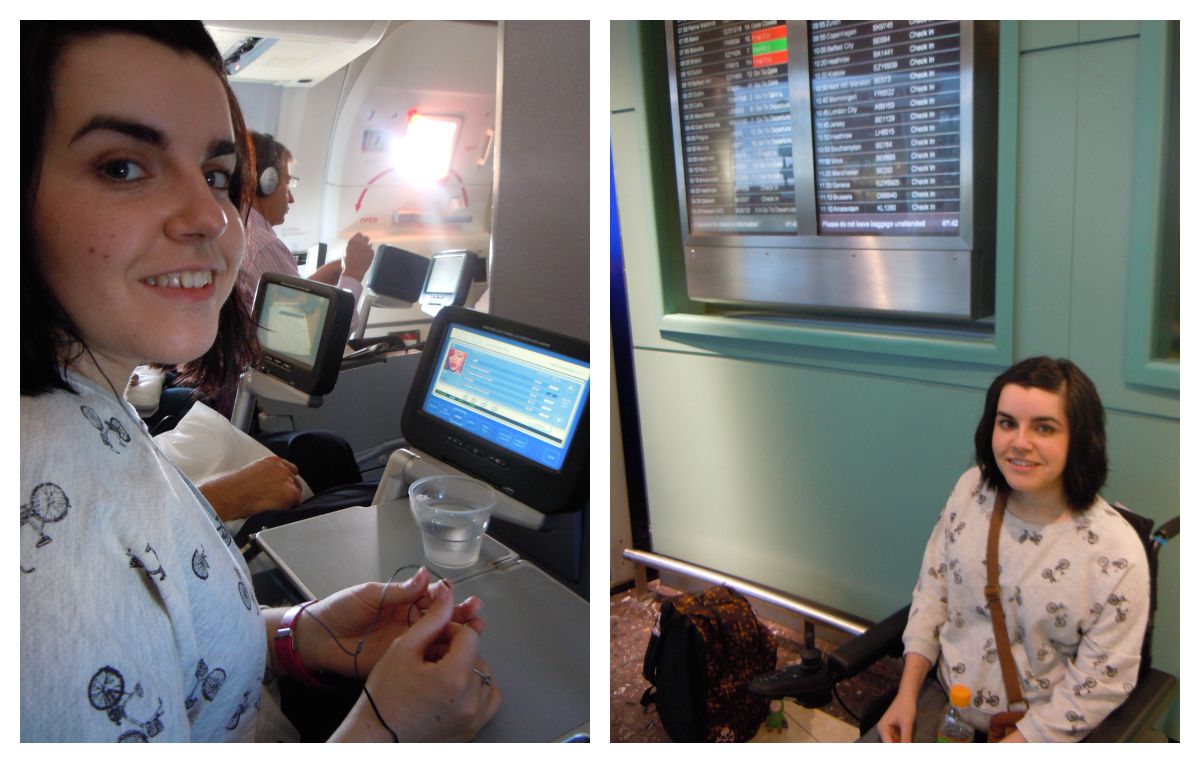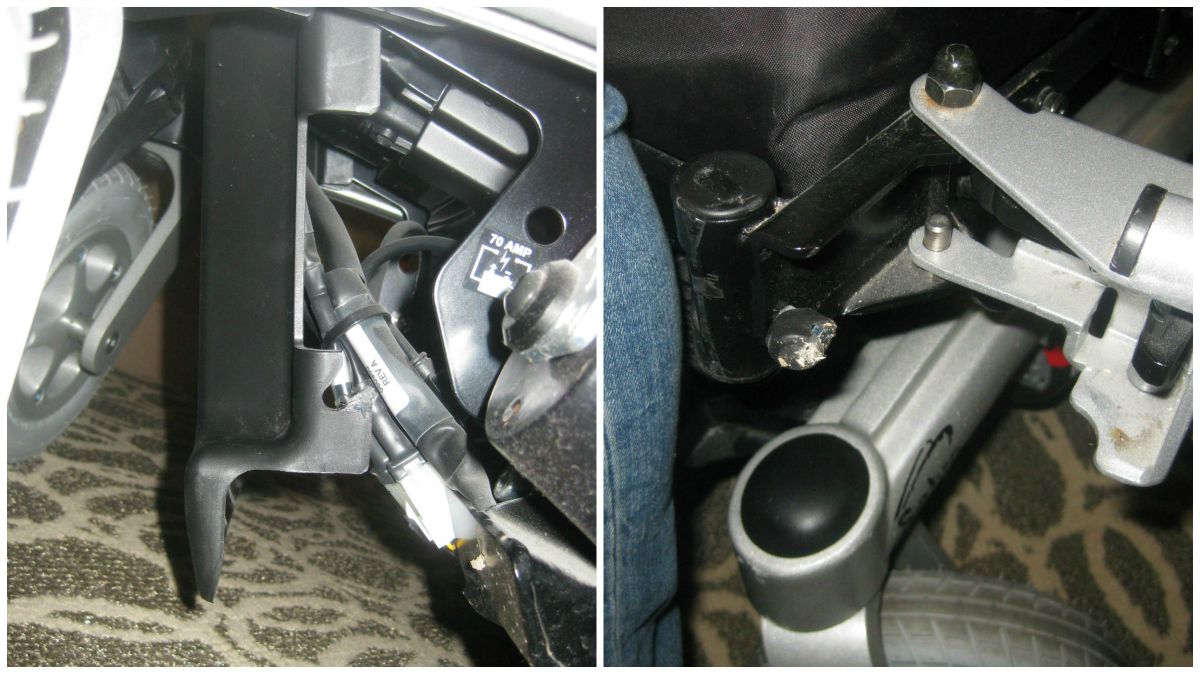Let’s be honest. Travelling is stressful. Even the most experienced traveller will have stressful moments at some point throughout their trip. Travelling with a disability brings added stress, but by no means does it make disabled travel impossible. Planning is the key, so plan, plan, plan.
So here is a list of my tips for disabled and wheelchair accessible travel that I’ve learned throughout my experience of travelling. I hope they help when you’re planning your next wheelchair accessible holiday.

1. Plan until you can’t plan any more
The first step is obviously deciding where you want to visit. I’ll start by short-listing two or three places I’d like to visit and then do as much research online as I can. Google searches, travel websites, disabled travel blogs, disabled forums etc. Whittle it down to the chosen destination based on what’s best for accessibility. Don’t always base it completely on this factor though. If there is somewhere you desperately want to visit, do more research and you’ll most likely find that it’s more accessible than you think.
2. Book an accessible hotel
It’s a good idea to look for an accessible hotel as soon as possible. Most hotels, even the big hotel chains, only have a few accessible rooms and chances are these might be booked up fast. Booking in advance can also work out cheaper. Check if the hotel has an accessibility statement on their website and check if any fellow disabled travellers have left a review on the hotel’s Tripadvisor.
Call the hotel before making a reservation to confirm accessibility and ask any questions you might have. The bathroom and whether there is a roll-in shower are always my biggest concerns. It’s important to confirm whether or not the hotel has a lift inside and an accessible entrance. I once read online that our hotel in New York had an accessible entrance, but when we arrived we quickly discovered it was a portable ramp that the doormen had to manually put down for me each time we wanted to enter and exit the hotel. We often had to wait if they were busy, which wasn’t ideal. The ramp was also very steep. Ask the hotel to send a confirmation email of these details, then you can take this with you as written confirmation if there are any problems when you arrive.

Left: Large accessible bathroom. Right: Portable wheelchair ramp at the hotel entrance.
3. Plan an accessible route
I always find it helpful to have a rough, if not full itinerary of the trip, especially if it’s a sightseeing trip. This way you have a clear understanding of where you’re going, when you’re going, how you’re getting there, what to expect in terms of accessibility and so on. Planning this before your trip will make everything a lot easier for you.
Research the accessibility of the tourist attractions you want to visit and find out where the accessible entrances are. This will save you from being left outside while your companion is inside trying to find someone to help (been there many times). Check public transport accessibility, subway stations and even restaurants. We made the mistake of going out of our way to go to a nice restaurant to discover we couldn’t get in because it had steps at the entrance. If you can’t find any information you’re looking for online just send them a quick email. It also doesn’t hurt to double-check.
Plan transportation to and from the airport before you travel. Unless you know for sure that there is definitely wheelchair accessible vehicles at the airport at all times, then don’t assume you’ll easily get one as soon as you exit arrivals. For example, when I visited Prague I was surprised to discover there were no wheelchair accessible taxis. I had to be lifted into a taxi and my wheelchair which weighs 135kg also had to be lifted separately into the back of the taxi. Booking transportation in advance is the best option.

4. Airlines & Airports
The first thing I ask when booking flights is if I’ll be seated behind the bulkhead. These seats have extra legroom, which makes transferring/lifting from an aisle chair into your seat on the plane and vice-versa a lot easier. Again this is something I always like to double-check and have written confirmation of, if possible. I also like to check the airline’s pre-boarding policy for disabled passengers as it’s good to board the plane before the rest of the passengers. Transferring in and out of the aisle chair can take some time and I don’t like everyone watching me while doing this.
Try to avoid connecting flights if possible, it will be a lot easier for you. Unless it’s an incredibly long flight and getting to the toilet on the plane is an issue, then it’s probably best to opt for connecting flights to allow yourself some breaks. I had a bad experience with a connecting flight to Las Vegas when my wheelchair was left at a New York airport. One word…nightmare! I now make sure it’s definitely on the plane before taking off.
Plane seats are extremely uncomfortable even for able-bodied people who have the luxury of being able to change their position. I find it’s a good idea to take your own wheelchair cushion on the plane as this can prevent any pressure sores and give you a little comfort.
I prefer to remain in my own wheelchair until the very last minute; when we are just about to board the plane. You might be asked at check-in if you can come out of your wheelchair right now and go into an airport wheelchair, but I always say no. Sitting in an airport wheelchair for several hours can be hell, especially if your flight is delayed or cancelled.
Tell the Special Assistance how you need/like to be lifted in and out of your wheelchair. I have very little upper body strength so I need to be lifted a certain way to prevent my shoulders from shooting up past my head (believe me I’ve learned from experience on this one…ouch!). You’re the expert on your body and condition so tell them what’s best for you. This will prevent starting your holiday off with a painful injury caused by not being lifted correctly or worse…being dropped.
When booking your flights it’s a good idea to have a note of the dimensions of your wheelchair and the type of battery if it’s a powered wheelchair. They ask for this information to ensure your wheelchair will fit in the hold and for safety reasons regarding the battery. Giving the information at the time of booking saves you from having to call them back once you have the details. It’s handy to have a note of this information with you when checking in as you may be asked this again.
You’ll most likely be asked to disconnect the battery in your wheelchair before airport staff take it away to be put in the hold. Knowing how to do this beforehand will save time and unnecessary stress if asked on the spot.
Don’t always go for the first travel insurance you are quoted. Have a look around and you may find one that is cheaper and better. Double-check with the insurance company that your condition is covered. I have added my wheelchair to my home contents insurance in case it’s damaged at the airport or on holiday.

5. Plan B, C and D
It’s not only important to plan what’s involved in getting you to your destination and your itinerary once there, but also the potential problems that might occur out of the blew. You might find it worthwhile taking a small repair kit with you in case of flat tyres etc and noting down a few contact details for repair shops or mobility companies that could help with spare parts for your wheelchair.
What if the hotel bed is extremely uncomfortable and too hard to sleep on? Lack of sleep and pressure sores are not something you want especially on holiday. I now take a self-inflating camping mattress that I lie on top of the hotel mattress and it works great. It rolls up neatly so doesn’t take up a lot of space in our suitcase either. I also take little cushions with me too that I use for supporting my arms in bed. Little extras that make a big difference in my comfort and sleep.
Packing extra medication will ensure you’re not left completely without if your flight is delayed or cancelled.

I believe the more organised you are for your trip, the less stressful it will be as you’ll be more prepared. You’ll know what to expect and you’ll be ready to put your Plan B into action if need be.
I hope you have found some of my travel tips helpful for your next adventure.
It’s a big world out there, so let’s get rolling and exploring!
What are your tips for disabled and wheelchair accessible travel?
You may also enjoy:
How To Plan An Accessible Day Out
5 Ways To Be a Tourist in Your Hometown as a Wheelchair User
5 Essential Things I Can’t Travel Without As A Wheelchair User
How to Survive a Long Haul Flight as a Wheelchair User
Sharing is caring!





29 Responses
thanks for this nice blog post. I visited dublin, ireland on St. Patricks day (17.3.) and I was really surprised. I got there with the cheapest airlinee possible and they offered everything they could to me as wheelchair user. When I went outside the airport in dublin I wanted to get a bus to city centre, where my hotel was. I was really surprised: an old volvo bus but (the surprise) it was equipped with an automatic (!) wheelchair ramp. I live here in switzerland, and we are known as a rich country. We do not have automatic ramps in our buses. If you’re lucky enough, the driver helps you put out the manual ramp. In december I’ll try Thailand. I’ve been there before my wheel chair need and know the thais are very helpful. Le’s see if they help me with the wheelchair too.I travel with a manual one and I can walk 5 meters and get into a normal taxi when the wheelchair is folded should be no problem. I’ll see what happens there once I arrive.
Have a great day
Alain
Hi Alain. Thank you for getting in touch, much appreciated 🙂 I’m happy to hear you had a good time In Ireland and that you found the transport wheelchair accessible. Some countries are great for accessibility while others are very much lagging behind. I haven’t visited Switzerland, but it’s somewhere I’d like to visit. Would you say its good overall for wheelchair accessibility? Have a great time in Thailand and thanks again for getting in touch 🙂
Emma
This is some really good information about wheelchair travel plans. It does seem like a good thing to be aware of when you need to travel with someone who has a wheelchair. My grandfather has been in a wheelchair for several years now and traveling with him is difficult. I liked that you pointed out that you should have several backup plans while traveling with him.
Hi Ivy. I’m so glad my tips have been helpful to you for your Grandfather. I’d love to hear how you get on when you next travel together. Do you have any upcoming travel plans?
Very good post! We are linking to this great article on our website. Keep up the great writing.
Awesome post. I am going to share this article with my friends. Hats off to your style of writing.
Thank you Bally! I really appreciate that 🙂
Hi, l have returned from the states after being away for four weeks, on arrival there l found my electric wheelchair was broken and could not be used. So l spent my whole holiday virtually unable to get out and about. I can manage to move short distances on my sticks but suffer with a great deal of pain in my shoulders whilst doing that. I received no help from the airline and virtually no help from my wheelchair supplier or manufacturer. Has anybody else been through this if so could you contact me.
Hi Michael. So sorry to hear about your awful experience. Did you make a complaint? Has anyone helped with repairs or compensation yet? I hope you’ve managed to sort something out.
Hi Emma, I love this article! You just don’t know how grateful I am knowing that somebody like you will focus and give importance to the disabled persons. They’re just like us normal people trying to travel from one place to another so they should also be given the necessary attention. Thanks a lot!
Thanks for your comment Joy! I’m glad you enjoyed the post and found it helpful/detailed. Happy travelling 🙂
Thank for this awesome post and valuable tips for disabled people. I am a disability attorney and i really love your article and style of writing, will share with my clients.
Hi Fred. Thank you for your kind comment. I’m thrilled you found this post valuable and I hope your clients find it helpful as well. Hope you’re having a lovely day and thanks again.
Thanks foor any other magnificent article. The placce else could
anybody get that kind of info in such an ideal approach of writing?
I have a presentation next week, and I’m at the look for such info.
Thank you so much. What is your presentation on?
My child has an autism spectrum disorder and he uses a power chair. Recently we planned to travel. We worry about my child how can we manage him. Thanks for sharing this tips. It’s really helpful for us. Have a good day.
Hi John. Thank you so much for your comment – it’s lovely to hear from you. I hope you enjoy your travels with your son. Please let me know where you decide to go and how you get on 🙂
This is a brilliant list for disabled travellers,thank you very much.
Thank you so much Alan. I hope you find these tips helpful 🙂
Hi Emma this is great advice.
Am wheelchair bound and just about to pluck up the confidence to do my first journey in my chair .
My biggest worry is transferring from my plane isle wheelchair to my plane seat as i cant load bare and dont have much use of my arms .many thanks joe
Hi Joe. Thank you for your lovely comment. How did you get on with your first trip in your chair? Where did you go? I hope you had a fantastic time 🙂